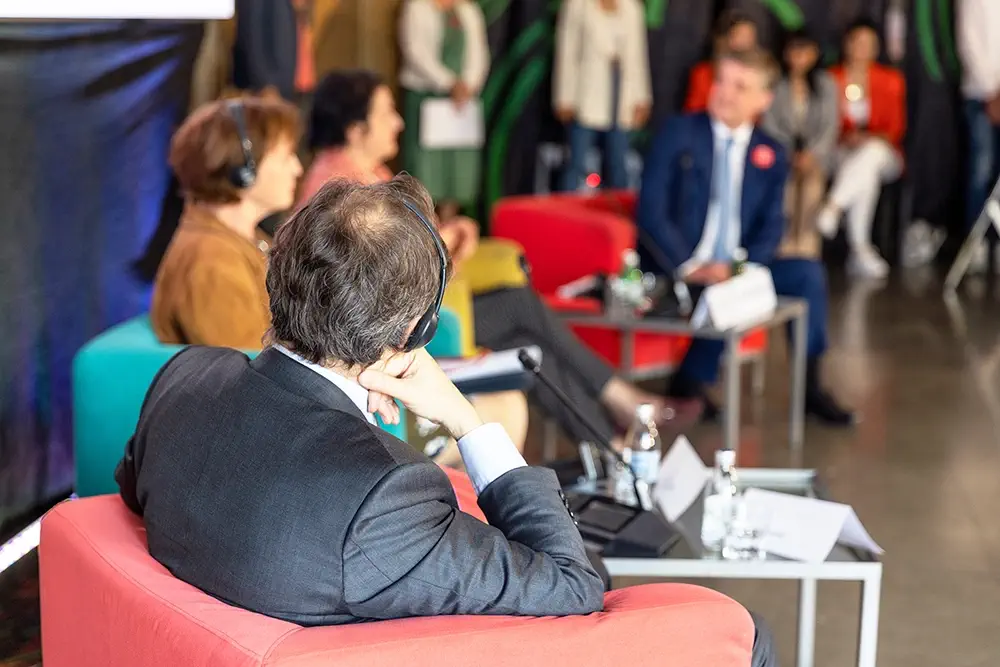For years, corporate event planning has revolved around large conferences and conventions. Yet the landscape has changed: marketing teams are working with tighter budgets, attendees expect more human and personalised experiences, and sustainability has become a decisive factor in how events are evaluated. In this context, microevents are emerging as a logical and strategic response.
The whitepaper “Micro-Events and Segmentation Strategies: An Alternative to the Macro-Event” explores this transition in depth and explains how organisations can rebalance their event portfolios to achieve greater efficiency, proximity, and relevance. This article summarises several of its key points.
Why Microevents, and Why Now?
The growing pressure to demonstrate measurable results has pushed many organisations to reconsider their traditional formats. In a large-scale event, assessing the true quality of interactions can be challenging: metrics tend to revolve around volume — attendance, leads, impressions — but it’s difficult to link these directly to genuine buying signals or meaningful decisions.
Microevents, however, operate under a different logic. By working with smaller and carefully selected groups, organisations can benefit from:
- Deep interactions and strategic conversations
- Stronger alignment with the ideal customer profile
- More tangible outcomes thanks to personalised and timely follow-up
As highlighted in the whitepaper, these formats reflect a cultural shift in attendee expectations. People increasingly value experiences that feel relevant, respectful of their time, and tailored to their specific needs.

Segmentation: The Heart of Microevents
The strength of microevents lies not only in their size, but in their intentional design. They work best when they target a highly specific segment — a type of organisation, a decision-making role, a level of maturity, or a shared challenge.
Unlike macro-events, which must serve broad and diverse audiences, microevents enable genuine hyper-personalisation:
- Executive roundtables for university CIOs
- Technical workshops for implementation teams
- Strategic meetups for sustainability directors in hospitality
This approach aligns naturally with Account-Based Marketing (ABM) and with the development of micro-communities that meet several times a year, evolving from isolated encounters into an ongoing, 365-day relationship.
Formats That Are Working
According to our analysis, the most effective microevent formats today include:
- Executive roundtables (8–15 people): ideal for high-value peer learning and strategic dialogue
- Hands-on workshops (15–30 participants): perfect for accelerating product adoption or working through specific challenges
- Roadshows and regional tours: bringing content closer to key markets while reducing travel
- Experiential pop-ups: brand activations designed for small groups, focused on emotional impact
- Recurring meetups within 365-day communities
Though their purposes differ, they all share the same principle: fewer attendees, greater value.

Measuring the Real ROI of Microevents
One of the major advantages of microevents is that they allow for more meaningful and relevant metrics. Instead of simply counting attendees, evaluation focuses on:
- Percentage of accepted invitations per segment
- Key conversations per hour
- Actionable ideas generated
- Follow-up meetings and opportunities opened
- Contribution to the ICP account journey
Traceability is higher because groups are small and follow-up is naturally more personalised. The whitepaper explains how to integrate these insights into a CRM and how to compare microevent ROI with traditional formats in a fair and structured way.
Sustainability and Microevents: A Natural Fit
Reducing travel, working with local suppliers, and choosing more efficient venues is far easier in smaller formats. The whitepaper details several studies showing that most event-related emissions come from attendee transport, and explains how microevents can drastically reduce this footprint without compromising impact.
This approach also strengthens an organisation’s social licence to operate, particularly for those with ESG commitments.
Technology and Data: The Invisible Enablers
Microevents make better and more precise use of data — from selecting the right twenty people for a roundtable to tailoring content and managing follow-up effectively.
The whitepaper highlights the growing role of analytics, AI, registration platforms, and community-driven dynamics as essential enablers of a more professionalised microevent strategy.
Download the Whitepaper and Rethink Your Strategy
Microevents aren’t designed to replace macro-events — they complement them. A large annual gathering remains valuable, but its impact grows significantly when it sits within a wider network of high-value touchpoints throughout the year.
In the full whitepaper, you can explore:
- How to design a robust microevent programme
- Which formats work best for each scenario
- How to measure their impact rigorously
- How to embed them within a 365-day community strategy
We invite you to download the complete whitepaper:
“Micro-Events and Segmentation Strategies: An Alternative to the Macro-Event.”
About Eventscase
The Eventscase platform helps event organisers manage corporate events, conferences, and trade shows, whether large, small, in-person, hybrid, or virtual. No technical skill is required at all. Anyone can create beautiful event websites, registrations, badges, perform check-ins, event apps, 1:1 meetings and more. Everything under the brand and domain of your company can be implemented with an Eventscase whitelabelled platform.
If you would like to subscribe to our newsletter to get live updates on everything related to our platform – news, blogs, events, announcements and much more, please, register here.

